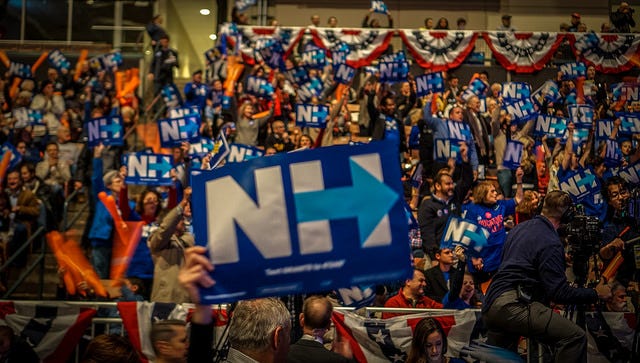
A third poll released on Thursday indicates Hillary Clinton has taken a double-digit lead over Donald Trump in the contest for New Hampshire’s four electoral votes.
In a survey of 802 registered voters, Democratic pollster Public Policy Polling found Clinton leading Trump by a 13 point margin, 50 percent to 37 percent. The PPP survey followed a poll of 820 registered voters that Republican pollster Vox Populi Polling released on Wednesday that gave Clinton a ten point advantage, 41 percent to 31 percent.
The two surveys come on the heels of a WBUR poll at the conclusion of the Democratic National Convention that also gave Clinton a double-digit lead. That survey, conducted by MassINC Polling Group, had Clinton opening up a 15 point lead over Trump, 47 percent to 32 percent.
Digging into the numbers
Most observers have expected Trump to be more competitive in the Granite State. FiveThirtyEight’s Harry Enten explains why. “He cruised in the New Hampshire primary, while Clinton got crushed by Bernie Sanders,” Enten writes. “New Hampshire is one of the whitest states in the nation, and it seemed like Trump’s appeal to white voters without a college degree might help him improve upon Mitt Romney’s performance in the Granite State….“
To help explain Clinton’s lead, Enten points to a nationwide gap in support for Trump between evangelical Christians and non-evangelical Christians.
“Trump is doing better than Romney did among born-again and evangelical Christians but worse among Catholic voters,” Enten writes. “And that might explain New Hampshire. White born-again and evangelical Christians make up just 9 percent of New Hampshire’s population. White Catholics, meanwhile, are 24 percent, double their national share.”
A tightening race or potential landslide?
Despite the demographic disadvantage, Enten notes “it’s easy to imagine” Trump performing better in the Granite State if his national polling numbers improve. FiveThirtyEight’s polls-plus model, which adds economic conditions and historical data to polling results, does predict the race will tighten down the stretch, with Clinton ultimately winning the state by a 3.9 percent margin.
On the other hand, Enten’s colleague Nate Silver says we shouldn’t discount the possibility of a potential Clinton landslide. The theory behind the polls-plus model, he explains, is that “economic conditions prevail because most other factors are fought to a draw:”
In a normal presidential election, both candidates raise essentially unlimited money and staff their campaigns with hundreds of experienced professionals.
In a normal presidential election, both candidates are good representatives of their party’s traditional values and therefore unite almost all their party’s voters behind them.
In a normal presidential election, both candidates have years of experience running for office and deftly pivot away from controversies to exploit their opponents’ weaknesses.
In a normal presidential election, both candidates target a broad enough range of demographic groups to have a viable chance of reaching 51 percent of the vote.
The potential for a Clinton landslide exists, Silver writes, “because while most of those things are true for Clinton, it’s not clear that any of them apply to Trump.”


